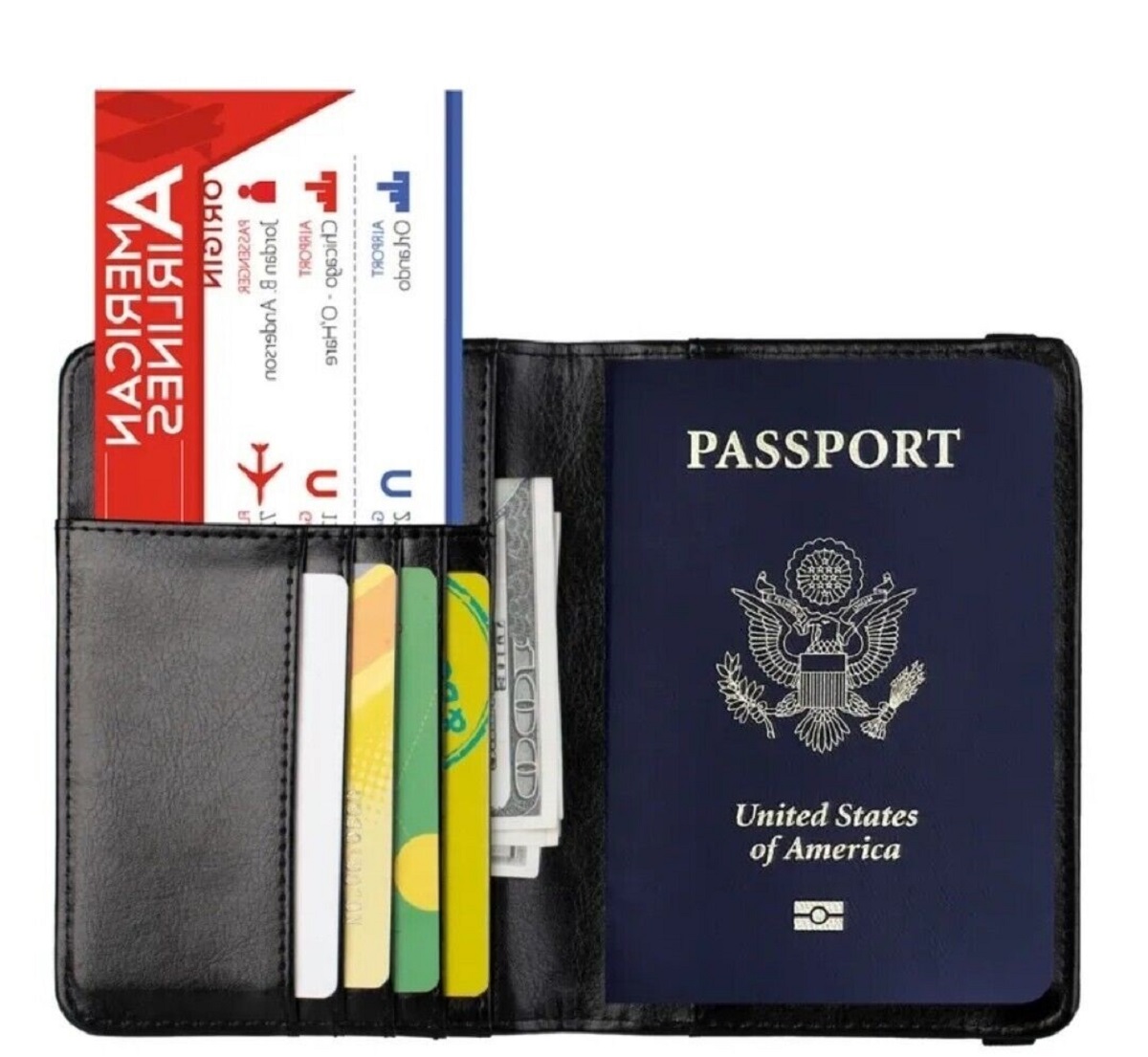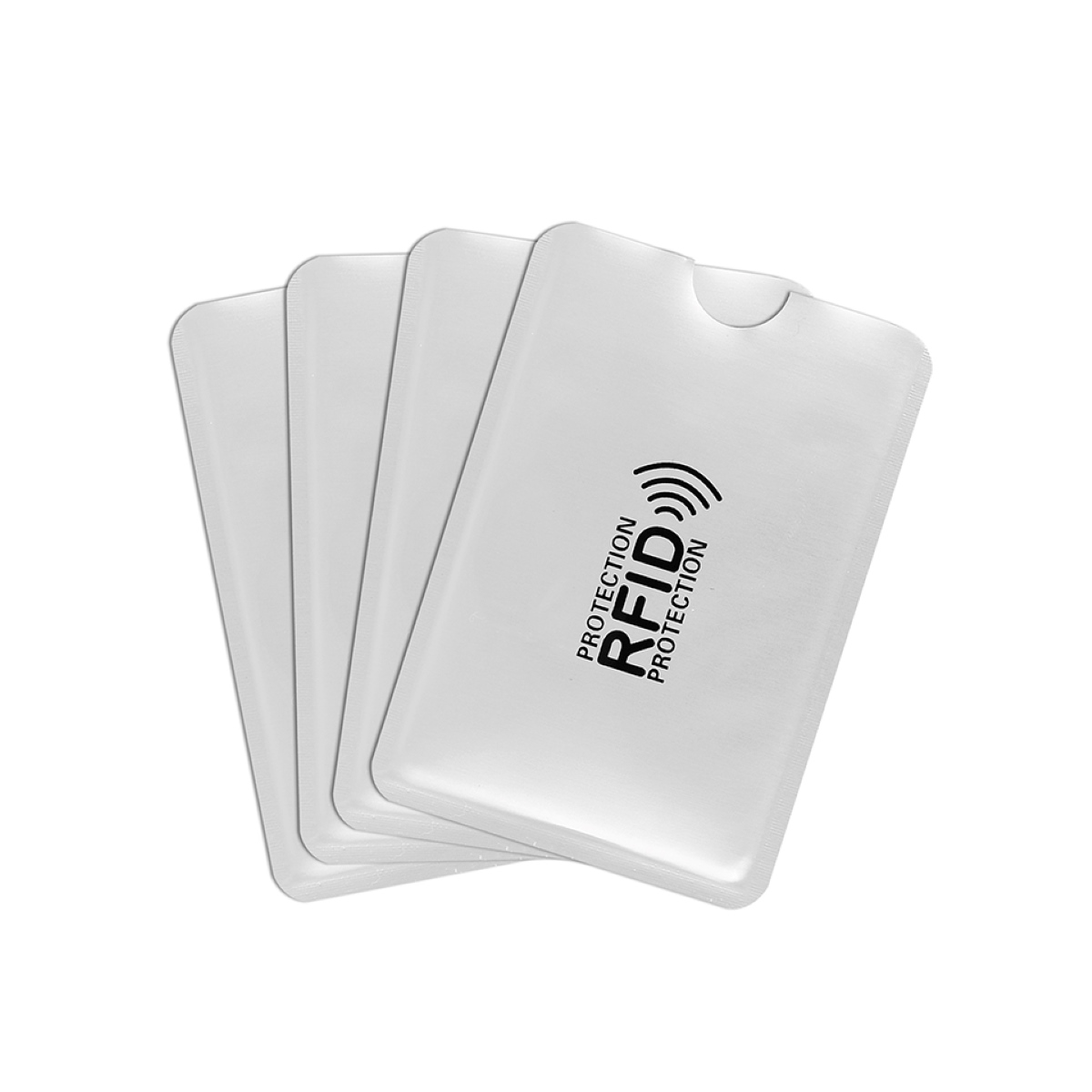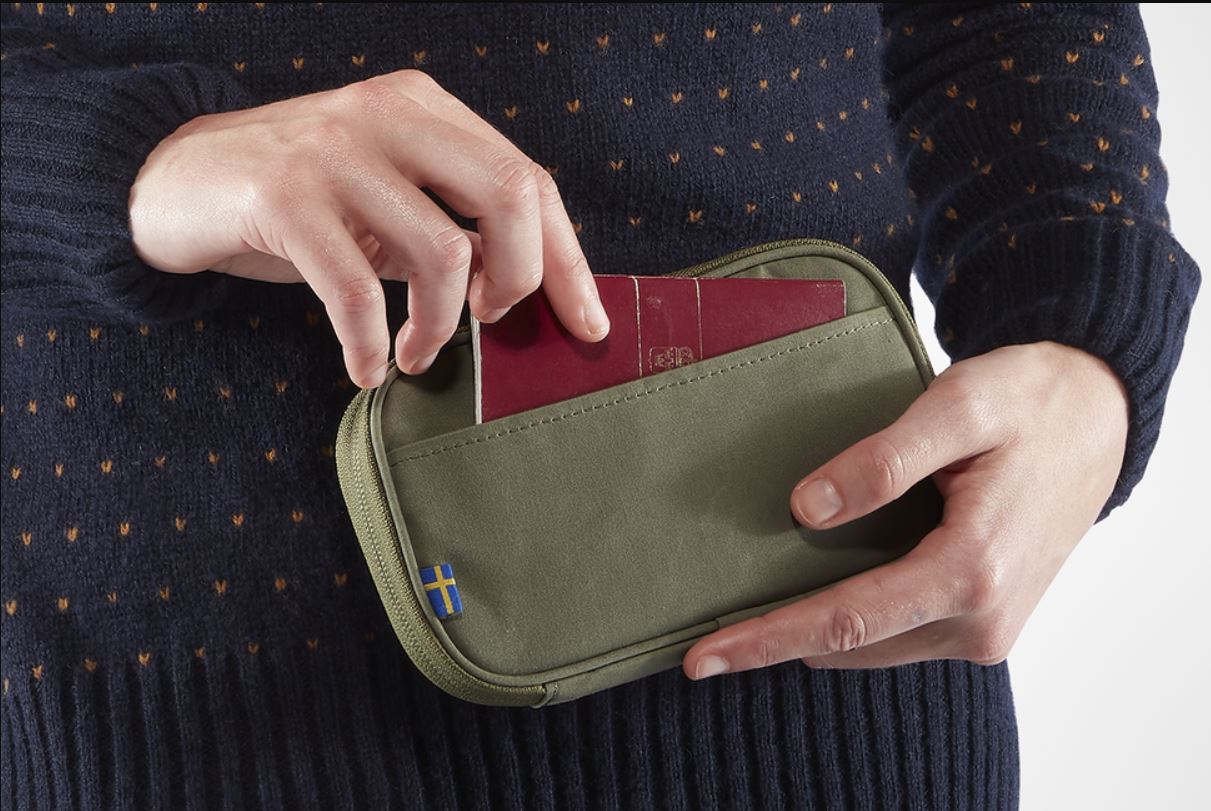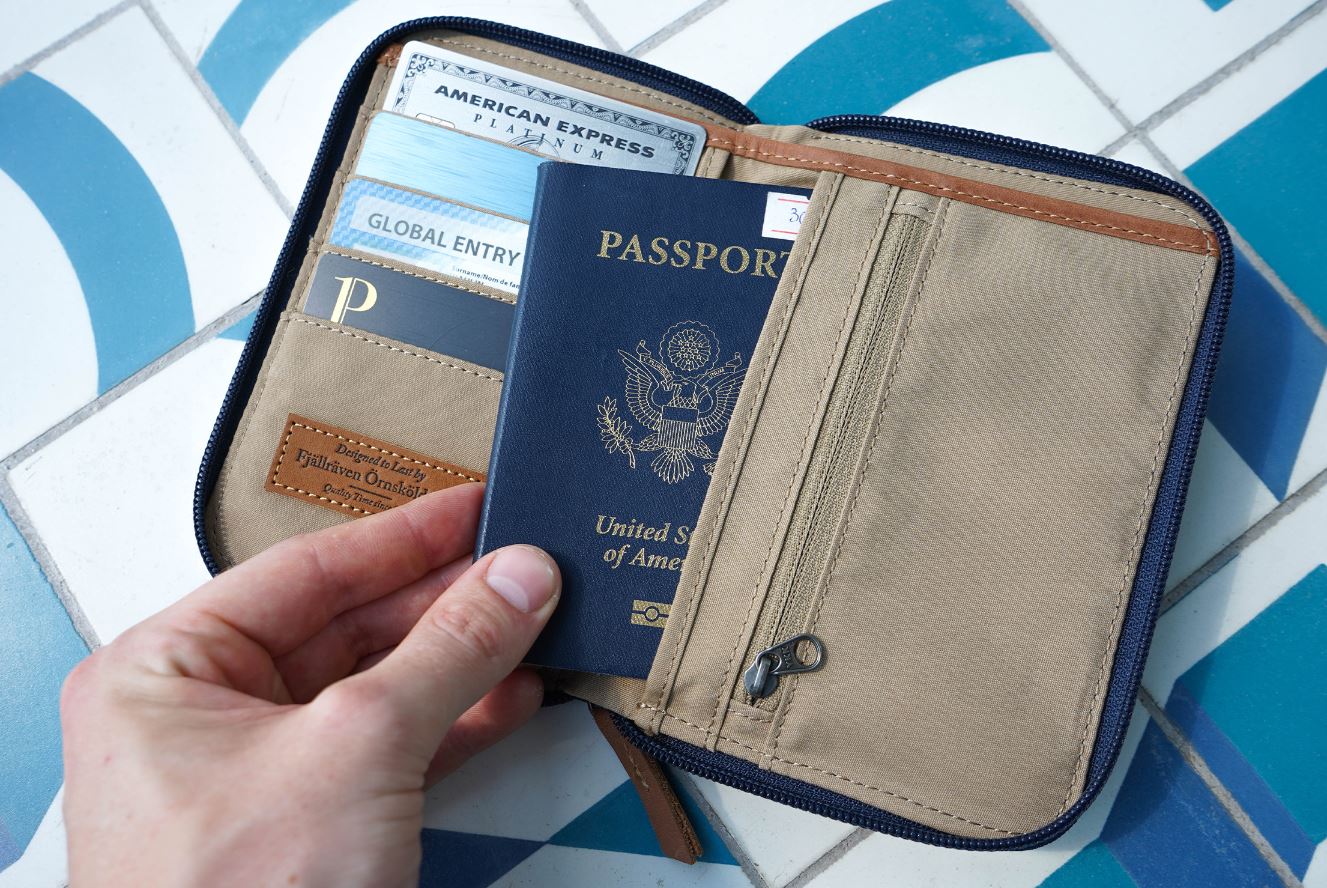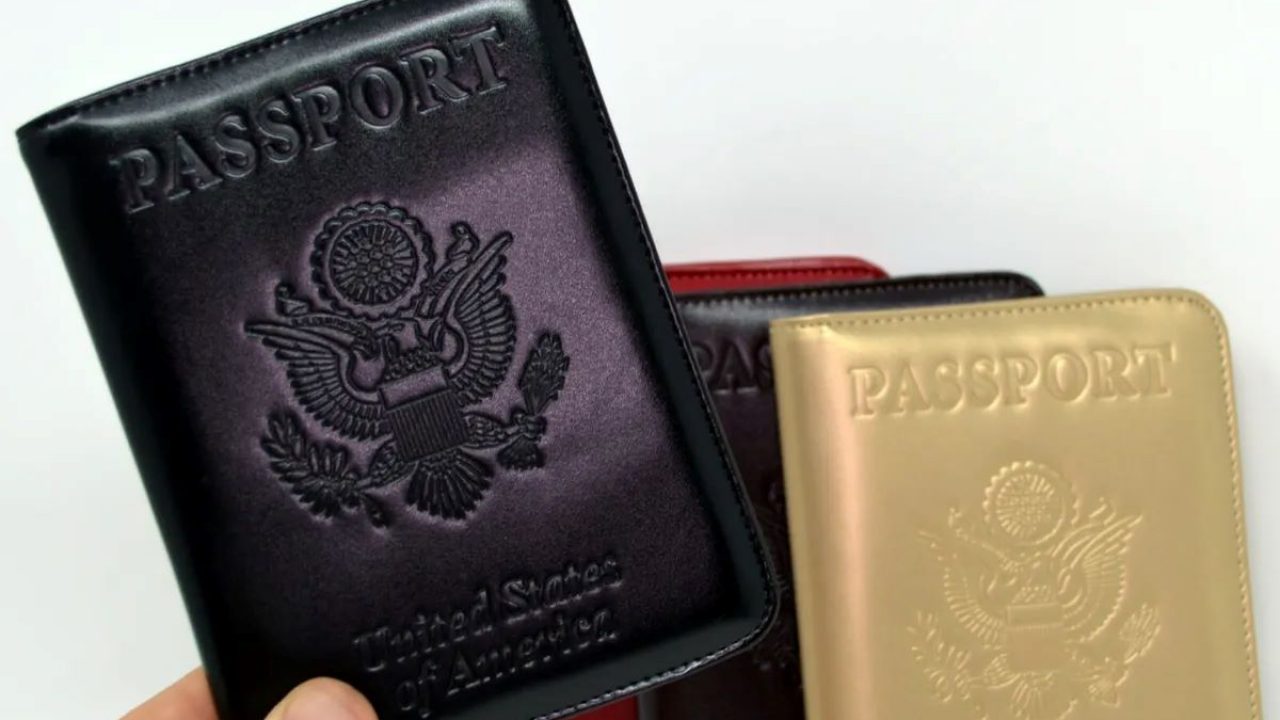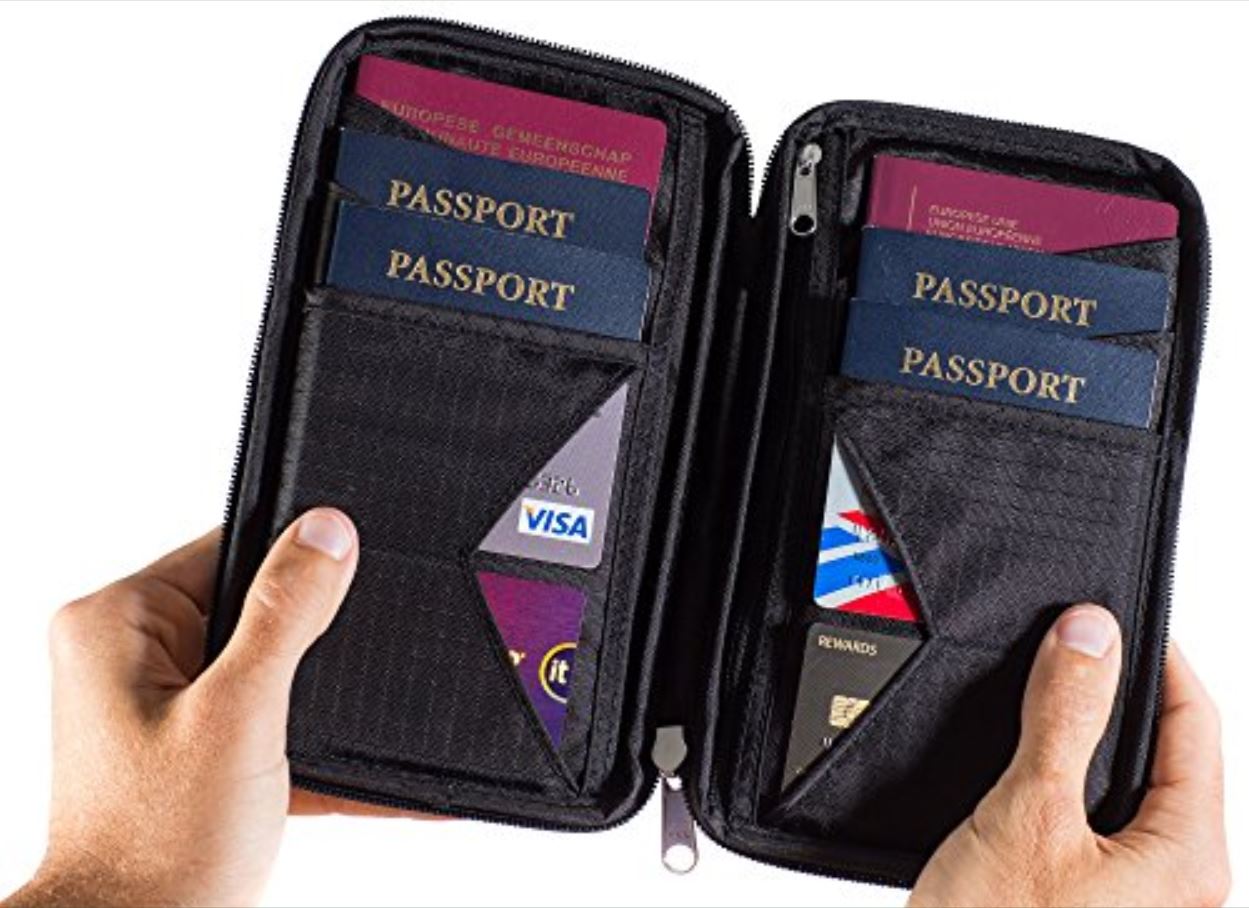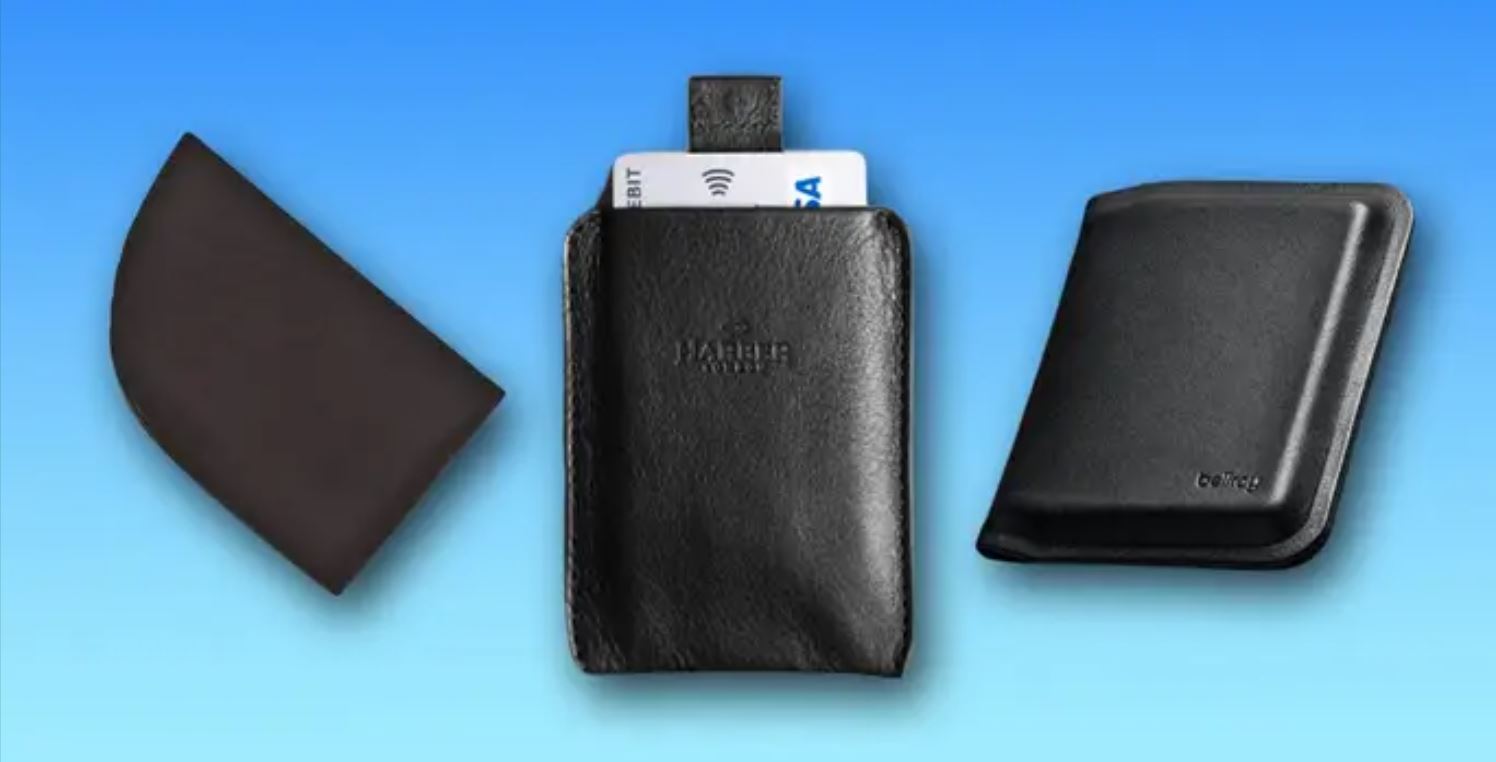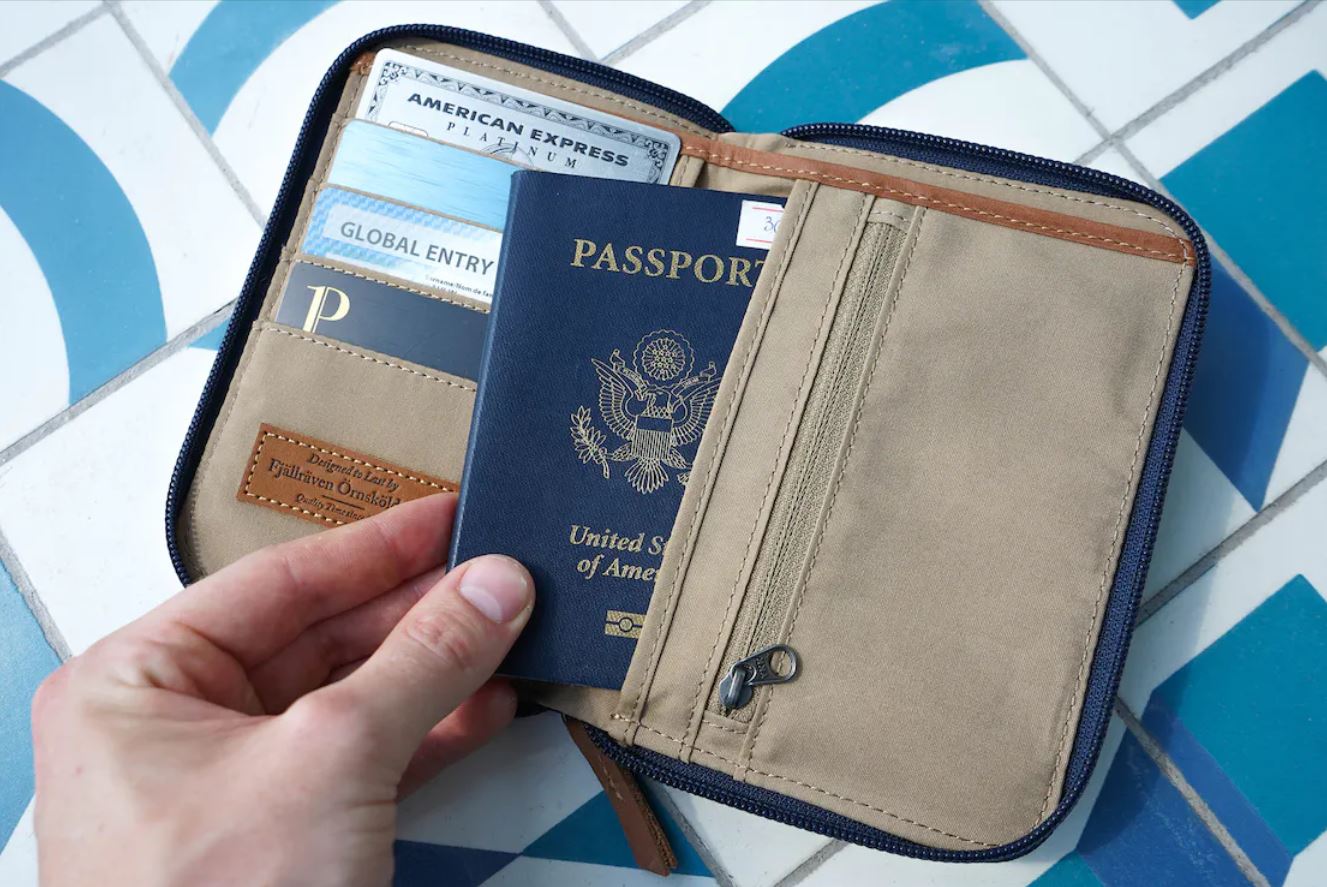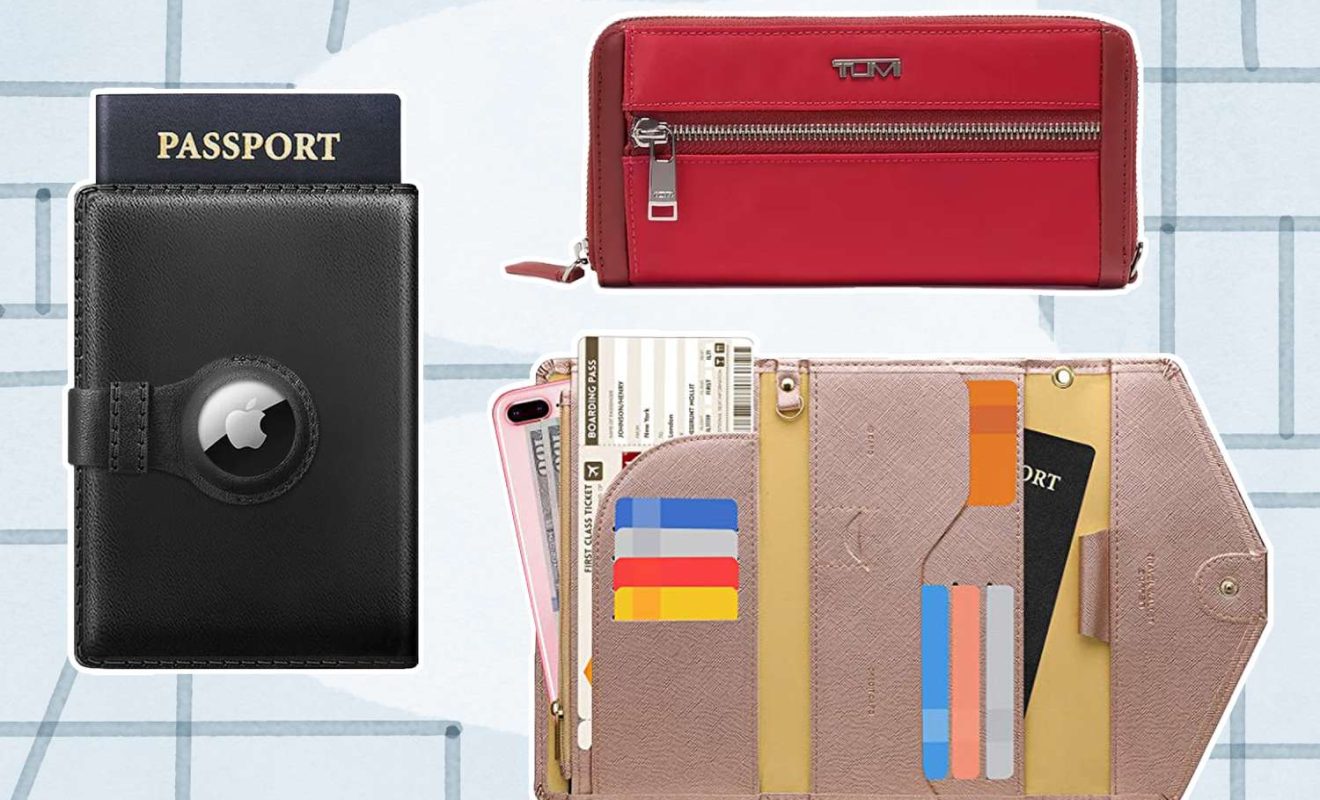The Importance of RFID Blocking for Passport Holders
With the advancements in technology, passports have gone through their fair share of transformations. One of the notable changes is the inclusion of RFID (Radio Frequency Identification) chips in modern passports. While this technology has made travel more convenient and streamlined, it has also introduced a new security concern – RFID skimming.
RFID technology allows the wireless transmission of data from an RFID chip to a reader device, making it easier for border control officers to verify and authenticate passport information. However, this same convenience can be exploited by tech-savvy criminals who can use handheld RFID readers to steal personal information from unsuspecting individuals.
RFID skimming, also known as electronic pickpocketing, is the act of intercepting the radio waves emitted by RFID chips to gain unauthorized access to personal information. This includes sensitive details such as your name, date of birth, and passport number. With this information, hackers can create counterfeit passports, commit identity theft, or engage in other illegal activities.
This is where RFID blocking for passport holders becomes essential. RFID blocking technology creates a protective shield around your passport, blocking the radio waves from being intercepted by unauthorized devices. By using an RFID blocking passport holder, you can safeguard your personal information and reduce the risk of falling victim to RFID skimming.
An RFID blocking passport holder typically features a durable outer material and a special lining that contains a fine metal mesh. This mesh acts as a barrier to block the radio waves emitted by RFID chips. Some passport holders also have additional security features such as locking mechanisms or fingerprint scanners for added protection.
When choosing the right RFID blocking passport holder, there are a few factors to consider. Firstly, ensure that it is compatible with the passport size and contains multiple slots for your travel documents. Look for high-quality materials that offer durability and water resistance to keep your passport safe during your travels. Additionally, consider the design and functionality that suits your personal preferences.
Aside from the primary function of protecting against RFID skimming, RFID blocking passport holders offer additional benefits. They help to keep your travel documents organized and easily accessible, with designated slots for your passport, boarding pass, credit cards, and other essentials. Some passport holders even have extra compartments for storing cash, pens, or small electronic devices.
Traveling with an RFID blocking passport holder provides peace of mind and ensures that your personal information remains secure. Whether you’re exploring a bustling city or lounging on a beach, knowing that your passport is protected from RFID skimmers allows you to focus on enjoying your journey without worrying about digital thieves.
What is RFID Technology?
RFID, short for Radio Frequency Identification, is a technology that uses radio waves to wirelessly transmit data between an RFID chip embedded in an object and an RFID reader. This technology has gained widespread popularity across various industries due to its ability to automate data capture and enhance operational efficiency.
An RFID system consists of three main components: the RFID chip, the RFID reader, and the backend software. The RFID chip, also known as an RFID tag, is a small electronic device that contains a microchip and an antenna. This chip is embedded in objects such as passports, credit cards, keycards, or even products in a supply chain.
The RFID reader is the device that emits radio waves and captures data from the RFID tags. It is equipped with an antenna that sends and receives radio signals. When an RFID tag comes into the range of the reader, the electromagnetic field emitted by the reader powers up the tag and activates its microchip.
Once activated, the RFID chip transmits the stored information back to the reader using radio waves. The reader then captures and decodes this data, which can include various details depending on the application. For example, in the case of a passport, the RFID chip may store information such as the holder’s name, date of birth, passport number, and other biometric data.
The captured data is then processed by the backend software, which can be a computer system or a network infrastructure. This software interprets the information received from the RFID reader and performs specific actions based on the application requirements. For instance, in border control, the software verifies the authenticity of the passport and cross-checks the holder’s information with a database for security purposes.
The use of RFID technology offers numerous benefits in various industries. In retail, RFID enables efficient inventory management, as items can be automatically tracked and counted. In healthcare, RFID can enhance patient safety by ensuring the right medication is administered to the correct patient. In logistics, RFID simplifies supply chain management by tracking the movement of goods in real-time.
However, while RFID technology has undoubtedly improved efficiency and convenience, it has also raised concerns regarding privacy and security. The wireless nature of RFID communication makes it susceptible to unauthorized access. This vulnerability has given rise to the threat of RFID skimming, which involves hackers intercepting the radio waves to steal personal data and carry out fraudulent activities.
Therefore, it is crucial to be aware of the existence of RFID technology and its potential risks. Understanding how RFID works and the steps taken to protect your personal information can help you make informed decisions and ensure the security of your sensitive data.
How Does RFID Work?
RFID, which stands for Radio Frequency Identification, is a technology that allows for the wireless transmission of data between an RFID tag and an RFID reader. This technology relies on radio waves to facilitate communication between these two components.
An RFID system consists of three main parts: the RFID tag, the RFID reader, and the backend system. The RFID tag, also known as an RFID transponder or smart label, is a small electronic device that is affixed to an object. It contains a microchip and an antenna, which enable it to transmit and receive data using radio frequency signals.
When a reader device emits radio waves, it creates an electromagnetic field in its vicinity. Once an RFID tag enters this field, it is powered up by the energy from the electromagnetic field and becomes active. The microchip on the RFID tag then uses this energy to transmit data back to the reader device using radio waves.
The transmission of data from the RFID tag to the reader device occurs through a process called backscatter. In passive RFID systems, which are commonly used, the RFID tag does not have its own power source. Instead, it relies on the energy provided by the electromagnetic field from the reader device to operate.
When the RFID tag receives energy from the reader device, it modulates that energy and reflects it back as a response. This modulation is done by altering the impedance of the antenna circuit on the RFID tag. By changing the impedance, the tag can backscatter the modulated radio waves back to the reader device, carrying the embedded data with it.
The reader device captures the backscattered radio waves from the RFID tag and decodes the encoded data. It then sends this data to the backend system for processing and interpretation. The backend system can include databases, software applications, or other network infrastructure that utilize the captured data for various purposes, such as inventory management, access control, or authentication.
RFID technology operates on different frequency ranges, including low frequency (LF), high frequency (HF), and ultra-high frequency (UHF). The frequency range used depends on the specific application and requirements. LF and HF RFID systems typically have shorter read ranges but are more effective in environments with metal or liquid interference. UHF RFID systems, on the other hand, have longer read ranges and are suitable for large-scale inventory management or tracking.
Overall, RFID technology offers a contactless and efficient means of data transmission. It eliminates the need for physical contact or line of sight between the RFID tag and the reader device, making it ideal for a wide range of applications across industries.
The Rise of RFID Skimming
As RFID technology has become more prevalent in everyday life, so has the concern over RFID skimming. RFID skimming refers to the unauthorized access of personal information stored on RFID chips, such as those found in credit cards, passports, and ID cards. This technique has gained popularity among tech-savvy criminals who exploit the vulnerabilities of RFID technology to steal sensitive data.
The rise of RFID skimming can be attributed to several factors. Firstly, the increasing adoption of RFID technology in various industries has led to a higher number of RFID-enabled items in circulation. This provides more opportunities for criminals to target unsuspecting individuals. RFID-enabled credit cards, for example, are now the standard in many countries, making them a common target for potential skimming attacks.
Secondly, the relatively inexpensive and easily accessible nature of RFID skimming devices has contributed to the proliferation of this criminal activity. Handheld RFID readers, also known as skimmers, can be purchased online or even built by individuals with basic technical knowledge. This accessibility makes it easier for criminals to obtain the tools necessary to carry out RFID skimming attacks.
Another contributing factor to the rise of RFID skimming is the lack of understanding and awareness among the general public. Many individuals are unaware of the existence of RFID technology in their everyday items, let alone the security risks associated with it. This lack of awareness leaves them vulnerable to potential skimming attacks, as they may not take the necessary precautions to protect their RFID-enabled items.
Furthermore, the evolution of RFID skimming techniques has made it even more difficult for individuals to detect and prevent such attacks. Skimmers have become increasingly sophisticated, capable of capturing the data from RFID chips at greater distances and through various barriers, such as wallets or purses. This makes it challenging for individuals to know if their personal information has been compromised.
The consequences of RFID skimming can be significant. Stolen information can be used to commit identity theft, make unauthorized transactions, or even create counterfeit documents. The financial and emotional impact on victims can be devastating, leading to financial loss, damaged credit, and a loss of trust in electronic payment systems.
To combat the rise of RFID skimming, individuals can take proactive measures to protect their personal information. One effective method is to use RFID blocking products, such as wallets, sleeves, or passport holders, which incorporate materials that create a shield against RFID signals, preventing unauthorized access to the embedded data. Being cautious while using RFID-enabled items, such as keeping credit cards out of sight and using secure RFID blocking sleeves, can also help reduce the risk of skimming attacks.
Overall, the rise of RFID skimming serves as a reminder of the importance of staying informed and taking proactive steps to protect personal information. Knowledge about the vulnerabilities of RFID technology and the implementation of security measures can help individuals safeguard their data and mitigate the risks posed by RFID skimming.
The Dangers of RFID Skimming
RFID skimming poses significant dangers to individuals and organizations alike, as cybercriminals exploit the vulnerabilities of RFID technology to gain unauthorized access to personal and sensitive data. Understanding the potential dangers associated with RFID skimming is crucial in order to take appropriate measures to protect against this growing threat.
One of the primary dangers of RFID skimming is the risk of identity theft. By intercepting the radio waves emitted by RFID chips, criminals can obtain personal information such as names, addresses, and credit card numbers. With this information, they can assume someone’s identity, open fraudulent accounts, and wreak havoc on an individual’s financial and personal life.
In addition to identity theft, RFID skimming can lead to unauthorized transactions. If criminals gain access to credit card details stored on RFID-enabled cards, they can make fraudulent purchases or withdrawals, causing financial harm to the victims. These unauthorized transactions can go unnoticed until the victims review their bank statements or receive unexpected bills, leading to inconvenience and potential financial loss.
Furthermore, RFID skimming can compromise national security when it comes to passports and other identification documents. By accessing the personal information stored on RFID chips within passports, criminals can create counterfeit passports or forge travel documents. This can be exploited by terrorists, human traffickers, or other individuals involved in illegal activities, compromising border control and national security measures.
Another danger of RFID skimming is the potential for privacy invasion. Personal information, such as travel patterns or purchase history, can be collected through the RFID tags embedded in items such as credit cards or loyalty cards. This invasive tracking allows criminals to gain insights into an individual’s habits, preferences, and even location, raising serious concerns about personal privacy and security.
Moreover, RFID skimming can have a significant impact on organizations. In industries such as retail, where RFID technology is used for inventory tracking, skimming can result in inventory discrepancies and financial losses. Hackers could manipulate data or gain unauthorized access to supply chain information, potentially disrupting operations and causing reputational damage to businesses.
It is important to note that the dangers of RFID skimming are not limited to physical proximity. With the advancement of technology, sophisticated criminals have developed long-range RFID skimmers that can capture data from several feet away. This means that individuals may unknowingly have their information stolen even while going about their daily activities in crowded places.
In order to mitigate the dangers of RFID skimming, individuals and organizations should take steps to protect their RFID-enabled items. Using RFID blocking products, such as sleeves or wallets, can create a barrier that prevents the interception of radio waves and safeguards personal information. Regularly monitoring bank and credit card statements, as well as credit reports, can help detect any unauthorized activities at an early stage.
By being aware of the dangers associated with RFID skimming and implementing appropriate security measures, individuals can protect themselves and their organizations from the devastating consequences of this growing threat.
Protecting Your Passport with RFID Blocking
As the need for enhanced security measures continues to grow, protecting your passport from RFID skimming has become more important than ever. Criminals can exploit vulnerable RFID technology to steal sensitive information stored in your passport, making it crucial to take steps to safeguard your personal data.
One effective method of protecting your passport is through the use of RFID blocking technology. RFID blocking materials, such as metal mesh or special polymers, create a shield that prevents radio waves from reaching the RFID chip in your passport. This barrier effectively blocks unauthorized access, safeguarding your personal information from potential skimming attacks.
An RFID blocking passport holder is a popular and convenient solution. These holders are specially designed with RFID blocking materials incorporated into their construction. They provide a secure storage solution for your passport while also preventing the interception of radio waves.
When choosing an RFID blocking passport holder, it is important to consider factors such as durability, functionality, and size. A durable and well-constructed holder will provide long-lasting protection for your passport, ensuring that the RFID blocking capabilities remain effective throughout your travels.
Functionality is another key consideration. Look for a passport holder that has multiple compartments or slots for your travel documents, such as boarding passes or ID cards. This will help you keep your documents organized and easily accessible while minimizing the risk of losing or misplacing them.
Ensure that the passport holder is the appropriate size for your passport. It should fit snugly, providing a secure and protective enclosure for your passport without any unnecessary bulk. Some passport holders also offer additional features, such as zipper closures, pen holders, or even detachable wrist straps for added convenience and versatility.
Aside from RFID blocking passport holders, there are other preventive measures you can take to protect your passport from RFID skimming. Storing your passport in a secure location, such as a hotel safe, when not in use can help minimize the chance of it being scanned without your knowledge. Additionally, keeping your passport away from strong electromagnetic sources, such as microwaves or magnetic devices, can help preserve the integrity of the RFID chip inside.
Ultimately, protecting your passport with RFID blocking technology provides peace of mind as you travel. It helps to ensure the security of your personal information and reduces the risk of falling victim to identity theft or passport fraud. By investing in an RFID blocking passport holder and taking additional precautions, you can enjoy your travels with the confidence that your passport is well-protected.
The Features of an RFID Blocking Passport Holder
An RFID blocking passport holder offers more than just protection against RFID skimming. These holders are designed with various features to enhance functionality, convenience, and organization. Understanding the features of an RFID blocking passport holder can help you choose the right one to suit your needs.
Durability is a key feature of an RFID blocking passport holder. Look for a holder made from high-quality materials such as genuine leather or durable synthetic materials. These materials ensure longevity and provide resistance against wear and tear during your travels.
RFID blocking passport holders often include multiple compartments and slots for your travel essentials. They typically have a dedicated passport slot to securely hold your passport in place. This prevents it from sliding out or getting damaged while you’re on the move.
In addition to the passport slot, many holders have additional pockets for storing other travel documents, such as boarding passes, ID cards, or credit cards. This helps keep all your important documents in one place, making them easily accessible when needed.
Some RFID blocking passport holders also feature a clear ID window, allowing you to display your identification card without having to remove it from the holder. This can be convenient when going through security checks or presenting your identification in various situations.
Aside from document storage, many passport holders include extra features to enhance functionality. For example, a pen holder ensures that you have a pen readily available when you need to fill out customs forms or complete any necessary paperwork during your travels.
Some holders may have a zippered closure to provide additional security and prevent any items from accidentally falling out. This can be particularly useful if you have loose items, such as small coins or USB drives, that you want to keep safely stored.
Comfort and ease of use are also important aspects to consider in an RFID blocking passport holder. Look for holders that are lightweight and slim, ensuring they don’t add unnecessary bulk to your travel essentials. Some holders may even have a detachable wrist strap or a secure buckle closure to keep everything compact and secure.
While the primary function of an RFID blocking passport holder is to protect your passport from RFID skimming, the additional features offered by different holders can greatly enhance your travel experience. By selecting a holder that suits your needs, you can enjoy the convenience of having all your travel documents organized and secure in one place while providing an extra layer of security for your personal information.
How to Choose the Right RFID Blocking Passport Holder
With the numerous options available in the market, choosing the right RFID blocking passport holder can be overwhelming. However, by considering a few key factors, you can make an informed decision and select a holder that best suits your needs. Here are some tips to help you choose the right RFID blocking passport holder:
1. Size and compatibility:
Ensure that the passport holder is compatible with the size of your passport. Look for a holder that is specifically designed to fit standard passport sizes. It should provide a snug fit to securely hold your passport in place without being too loose or too tight.
2. RFID blocking capability:
Verify that the passport holder has effective RFID blocking capabilities. Look for holders made with RFID blocking materials, such as metal mesh or special polymers, that ensure the radio waves cannot penetrate the holder and access your passport’s RFID chip.
3. Material and durability:
Consider the durability and quality of the materials used in the passport holder. Opt for holders made with durable materials like genuine leather, synthetic fabrics, or sturdy nylon. These materials provide longevity, resistance to wear and tear, and ensure your passport holder can withstand the rigors of travel.
4. Organization and functionality:
Assess the organizational features and functionality of the passport holder. Look for multiple slots and compartments to hold not just your passport, but also your boarding pass, ID cards, credit cards, and any other travel essentials you may need. Consider additional features like pen holders, clear ID windows, or zippered closures to enhance the functionality and convenience of the holder.
5. Design and aesthetics:
The design and aesthetics of the passport holder may also be important to you. Select a holder that matches your personal style and preferences. Whether you prefer a simple and sleek design or a vibrant and patterned holder, choose one that you find visually appealing and enjoy using.
6. Customer reviews and ratings:
Take the time to read customer reviews and ratings of the passport holder you are considering. This can provide valuable insights into the quality, functionality, and durability of the product. Reviews from other users can help you make an informed decision and ensure that the holder meets your expectations.
By considering these factors and evaluating your individual needs, you can choose the right RFID blocking passport holder that provides the necessary protection for your passport and meets your travel requirements. Whether you prioritize functionality, durability, or aesthetics, finding the perfect passport holder will help you travel with peace of mind, knowing that your personal information is safe and secure.
Other Benefits of RFID Blocking Passport Holders
While protecting your passport from RFID skimming is the primary purpose of an RFID blocking passport holder, there are several additional benefits that make it a worthwhile investment. Here are some other advantages and benefits of using an RFID blocking passport holder:
1. Organization and convenience:
RFID blocking passport holders typically offer multiple compartments and slots to hold not just your passport, but also your boarding pass, credit cards, ID cards, and other travel essentials. This organization helps keep all your important documents in one place, making them easily accessible while minimizing the risk of misplacing or losing them during your travels.
2. Quick and efficient access:
Having all your travel documents securely stored in one place means quick and efficient access when needed. No more fumbling through pockets or bags to find your passport or boarding pass. With an RFID blocking passport holder, you can easily retrieve your documents, making your journey through airport security or customs checkpoints smoother and more convenient.
3. Protection against wear and tear:
Traveling can be rough on your passport, with potential damage from bending, moisture, or spills. An RFID blocking passport holder provides an added layer of protection for your passport, shielding it from physical wear and tear during your journeys. It helps keep your passport in pristine condition, allowing it to last longer and reducing the need for replacement.
4. Peace of mind:
Using an RFID blocking passport holder provides peace of mind as you travel. Knowing that your personal information stored on your passport is protected from potential skimming attacks or unauthorized access allows you to relax and enjoy your journey without constantly worrying about digital theft or identity fraud.
5. Versatility beyond passports:
RFID blocking passport holders are not limited to just holding passports. They can also be used to store and protect other RFID-enabled cards, such as credit cards, ID cards, or key cards. This versatility allows you to use the holder throughout your travels to keep all your RFID-enabled items secure in one place.
6. Enhanced privacy:
In addition to protecting against RFID skimming, an RFID blocking passport holder provides an added layer of privacy. The RFID-blocking materials used in these holders prevent unauthorized access to your personal information, ensuring that your sensitive data remains confidential and reducing the risk of unwanted surveillance or tracking.
Overall, RFID blocking passport holders offer more than just protection against skimming. They provide organization, convenience, and added peace of mind during your travels. With their versatility, durability, and enhanced privacy features, RFID blocking passport holders are essential travel accessories that help keep your important documents safe and secure throughout your journeys.
Traveling with Peace of Mind
Traveling is an exciting experience that allows us to explore new places, immerse ourselves in different cultures, and create lasting memories. However, ensuring your personal information and documents are secure is essential to truly enjoy your journey. By utilizing RFID blocking passport holders and taking necessary precautions, you can travel with peace of mind. Here’s how:
1. Protecting against RFID skimming:
With an RFID blocking passport holder, you can safeguard your passport and other RFID-enabled cards from potential skimming attacks. The RFID blocking technology acts as a shield, preventing unauthorized access to your personal information. By knowing that your sensitive data is protected, you can focus on the joy of exploring new destinations without worrying about identity theft or unauthorized transactions.
2. Avoiding potential inconveniences:
Imagine being in a foreign country, only to realize that your passport or credit card information has been compromised. This can lead to significant inconveniences, including difficulty in reporting theft or obtaining emergency travel documents. By using an RFID blocking passport holder, you can reduce the risk of such incidents, allowing you to navigate through your travels smoothly and avoid unnecessary complications.
3. Convenience and accessibility:
An RFID blocking passport holder not only protects your passport but also provides a convenient and streamlined travel experience. With designated compartments and slots, your important travel documents are organized and easily accessible when needed. No more rummaging through bags or pockets, ensuring a stress-free journey through airports, hotels, and various checkpoints.
4. Preserving the integrity of your passport:
Passports are valuable documents that allow us to travel internationally. Properly caring for your passport is essential to ensure its validity and usability. An RFID blocking passport holder can help protect your passport from physical damage, such as bent edges, moisture, or spills. By keeping it in a secure holder, you can preserve the integrity of your passport, extending its lifespan and reducing the need for frequent replacements.
5. Minimizing the risk of misplacing or losing important documents:
While traveling, the last thing you want to deal with is misplacing or losing your essential travel documents. An RFID blocking passport holder keeps all your documents in one place, reducing the likelihood of misplacing them. By having a designated location to store your passport, boarding pass, ID cards, and credit cards, you can easily keep track of your important documents, ensuring a stress-free and worry-free travel experience.
6. Enjoying your journey:
Ultimately, traveling with peace of mind allows you to fully enjoy your journey. By taking precautionary measures, such as using an RFID blocking passport holder, you can focus on immersing yourself in new experiences, connecting with people, and creating cherished memories. With the assurance that your personal information is protected, you can embrace the adventure, cultural exchange, and exploration that travel brings.
As you embark on your next travel adventure, prioritize your peace of mind by utilizing an RFID blocking passport holder. By protecting your important travel documents, you can travel with confidence, free from worries about identity theft or unauthorized access to your personal information. Traveling with peace of mind allows you to embrace the true essence of your journey and create lifelong memories.







